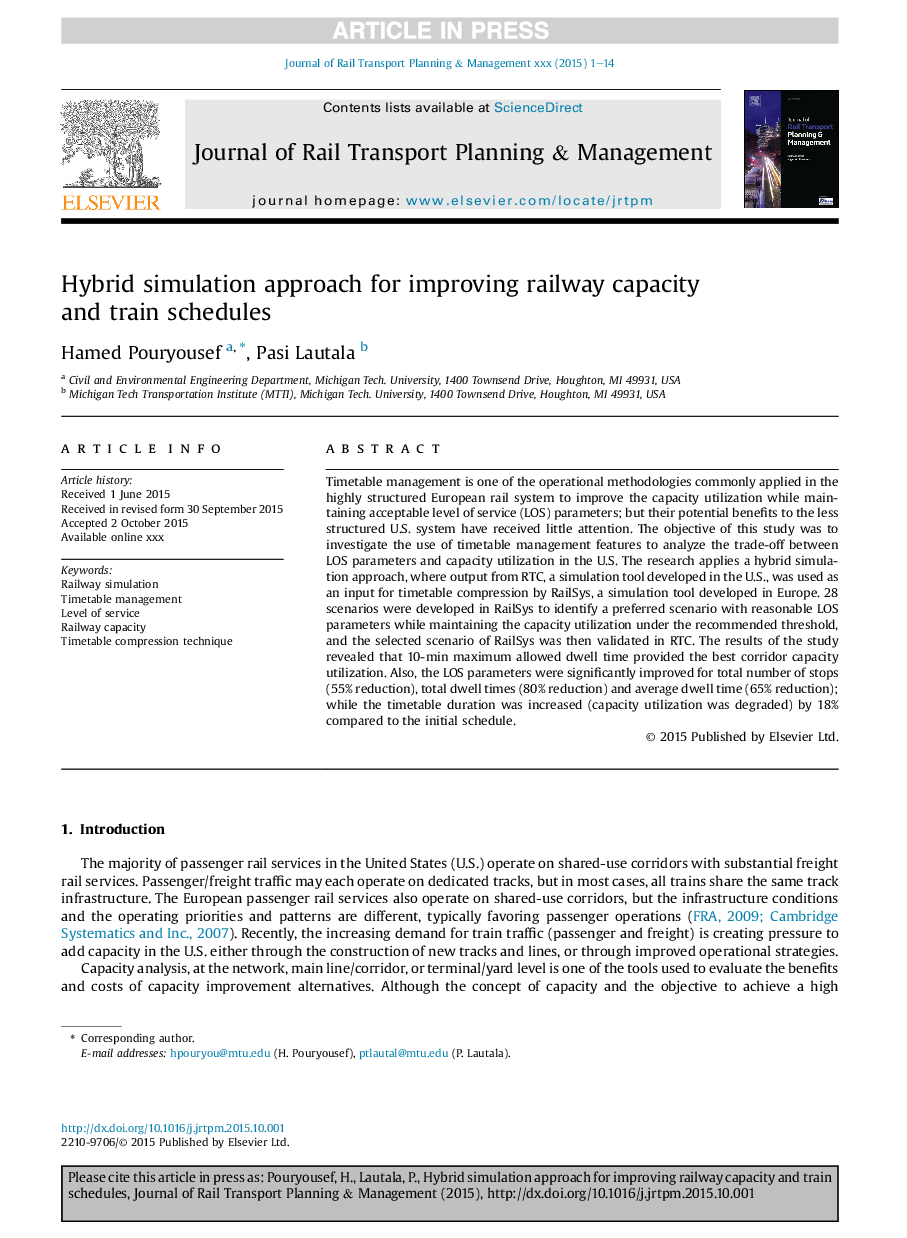| Article ID | Journal | Published Year | Pages | File Type |
|---|---|---|---|---|
| 10289152 | Journal of Rail Transport Planning & Management | 2015 | 14 Pages |
Abstract
Timetable management is one of the operational methodologies commonly applied in the highly structured European rail system to improve the capacity utilization while maintaining acceptable level of service (LOS) parameters; but their potential benefits to the less structured U.S. system have received little attention. The objective of this study was to investigate the use of timetable management features to analyze the trade-off between LOS parameters and capacity utilization in the U.S. The research applies a hybrid simulation approach, where output from RTC, a simulation tool developed in the U.S., was used as an input for timetable compression by RailSys, a simulation tool developed in Europe. 28 scenarios were developed in RailSys to identify a preferred scenario with reasonable LOS parameters while maintaining the capacity utilization under the recommended threshold, and the selected scenario of RailSys was then validated in RTC. The results of the study revealed that 10-min maximum allowed dwell time provided the best corridor capacity utilization. Also, the LOS parameters were significantly improved for total number of stops (55% reduction), total dwell times (80% reduction) and average dwell time (65% reduction); while the timetable duration was increased (capacity utilization was degraded) by 18% compared to the initial schedule.
Related Topics
Physical Sciences and Engineering
Computer Science
Computer Science Applications
Authors
Hamed Pouryousef, Pasi Lautala,
